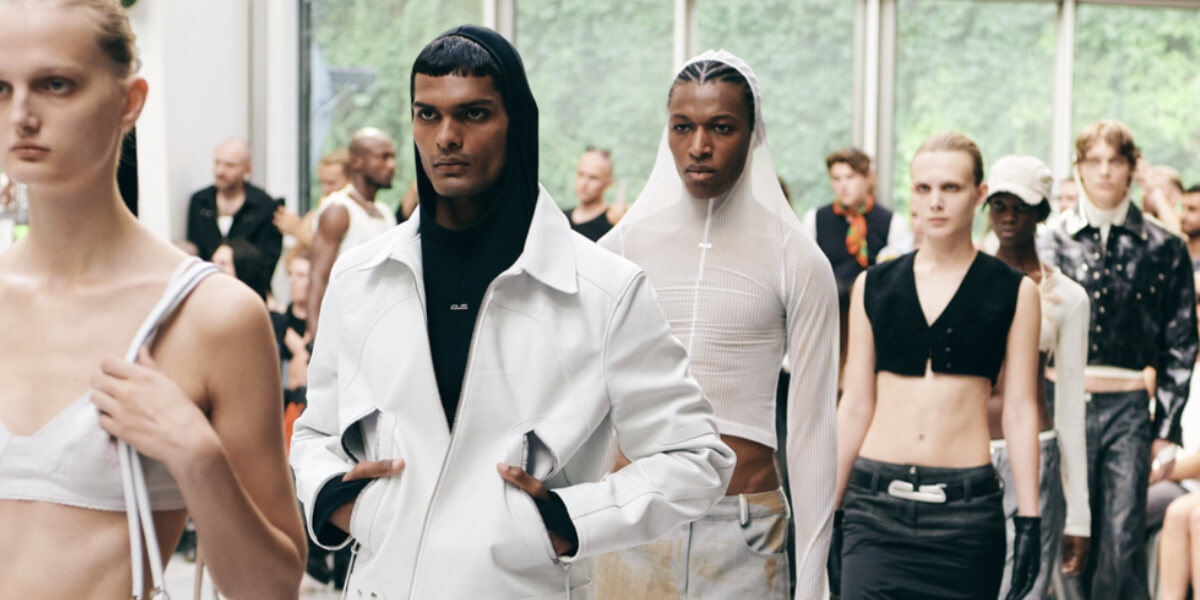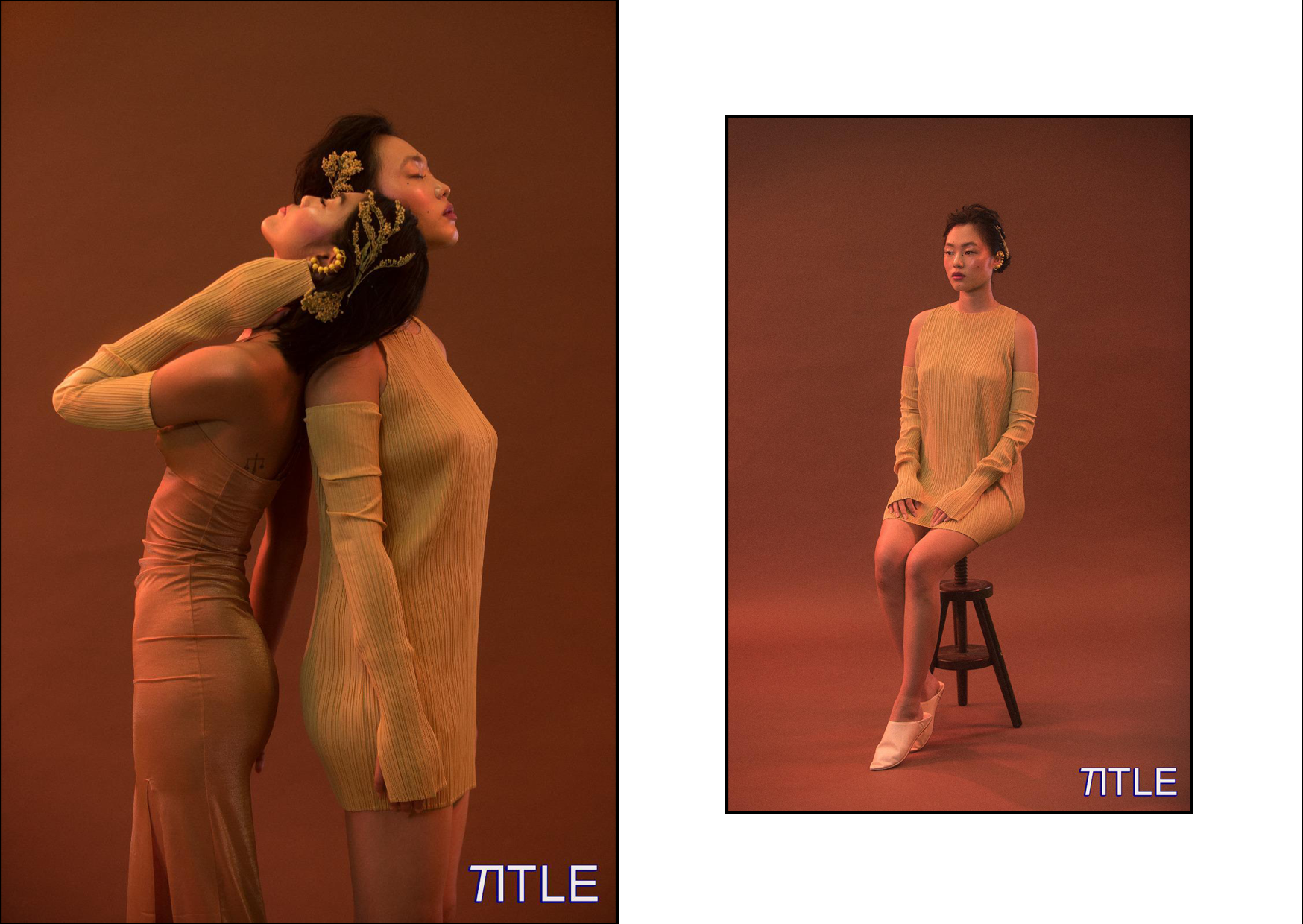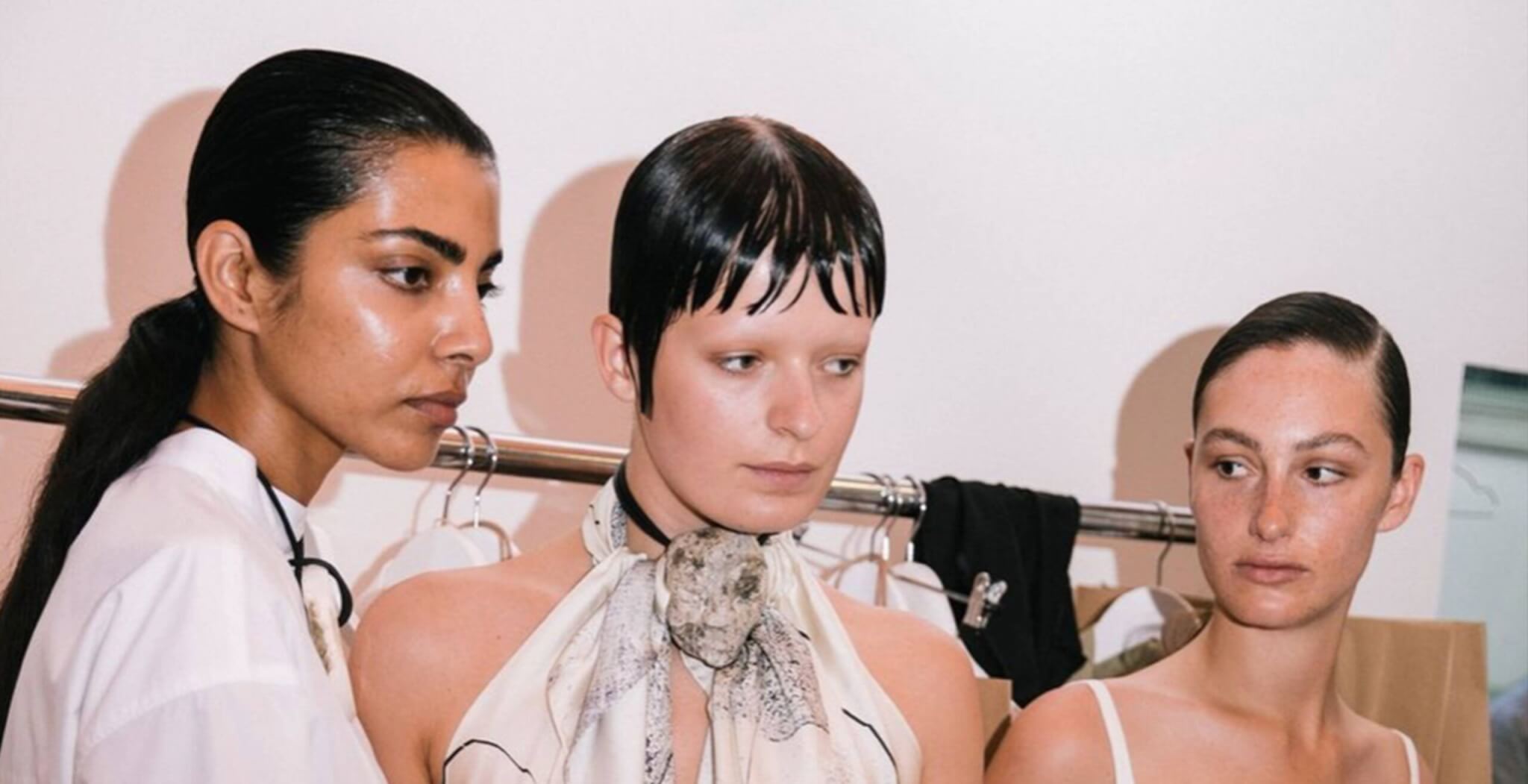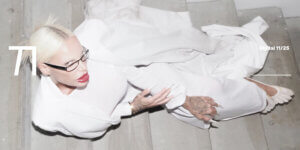Berlin, February 2024: The weather leaves a lot to be desired, as spring is still a long way off. But even if the climate doesn’t blossom: Berlin is in full bloom.
Interestingly, Berlin Fashion Week has been declared dead a thousand times and is still here. And not a bit meek. At the grand opening dinner at the Grill Royal, Christiane Arp, former Vogue editor-in-chief and founder of the German Fashion Council, gave a serious and optimistic speech, Secretary of State Michael Biel juggled with jobs and the billions in sales that fashion would bring to the economy, and impresario and agency head Mumi Haiati (Reference Studios) was still beaming with pride after presenting “an undisputed highlight of Berlin Fashion Week in a disused Neukölln department store”.
The big main sponsor is now gone and the labels can show at venues that suit their budget. This means they don’t have to pay expensive rent to the main sponsor and are on an equal footing with the major labels in the official show calendar.
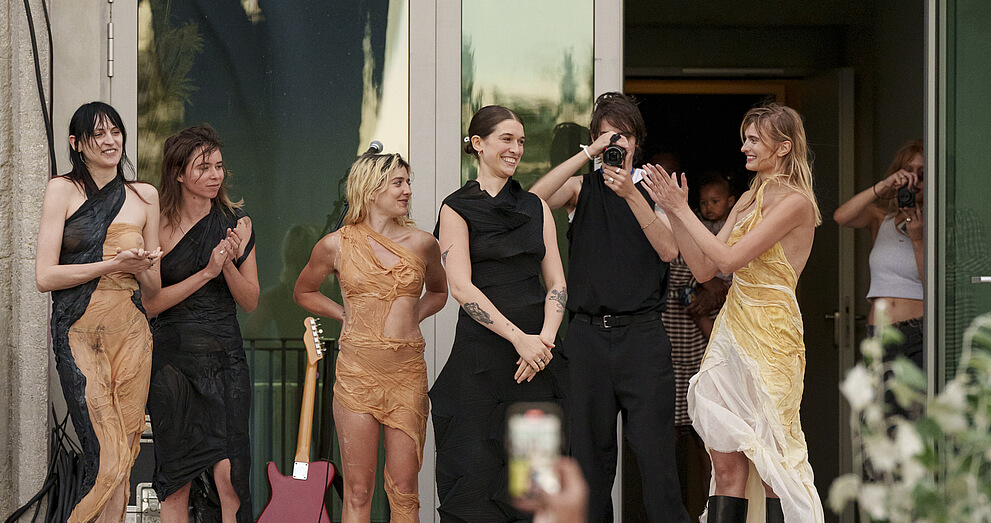
But Berlin’s raison d’être is its unpredictability. This mixture of the worst dilettantism and provincialism – for example, when three designers tried their hand at “exposed genitals” at the Berlin Salon, where Namilia’s penis studs were so much that you had to love them. And the exact opposite: competence, as in the case of Cologne designer Mario Keine, who presented an idiosyncratic, crazy, fashion-historically savvy collection. Cheeky, like the design duo SF1OG, who wrapped a UGG fur boot in old charger cables, which looked like an ironic nod to Berlin just after the fall of the Wall, when any pile of junk passed for art. Glamour, like William Fan, who showed his collection on the tartan of the training hall of the Olympic Stadium.
What I’m trying to say is that as soon as Berlin Fashion Week loosens up, lets go of false expectations and focuses on its own potential strengths, there will no longer be a problem. Because it’s all there: vibrant subcultures as reference and inspiration (from the Four Blocks dealers to the sex-positive party crowd), a constant stream of incoming talent and an enthusiastic audience, disused department stores (which will become even more so in the future) and a long tradition of rising again from the rubble and debris. Like the legendary phoenix that Pharrell Williams sang about in his super hit “Get Lucky”. And even if this will be the last such comparison for the time being: After all, the man made it all the way to Louis Vuitton.
In the 1920s, the fashion city of Berlin could certainly compete with Paris. The industry flourished mainly thanks to the numerous Jewish companies. The Nazis also destroyed this culture. Afterwards, Berlin lagged far behind fashion capitals such as Milan, Paris, New York and London.
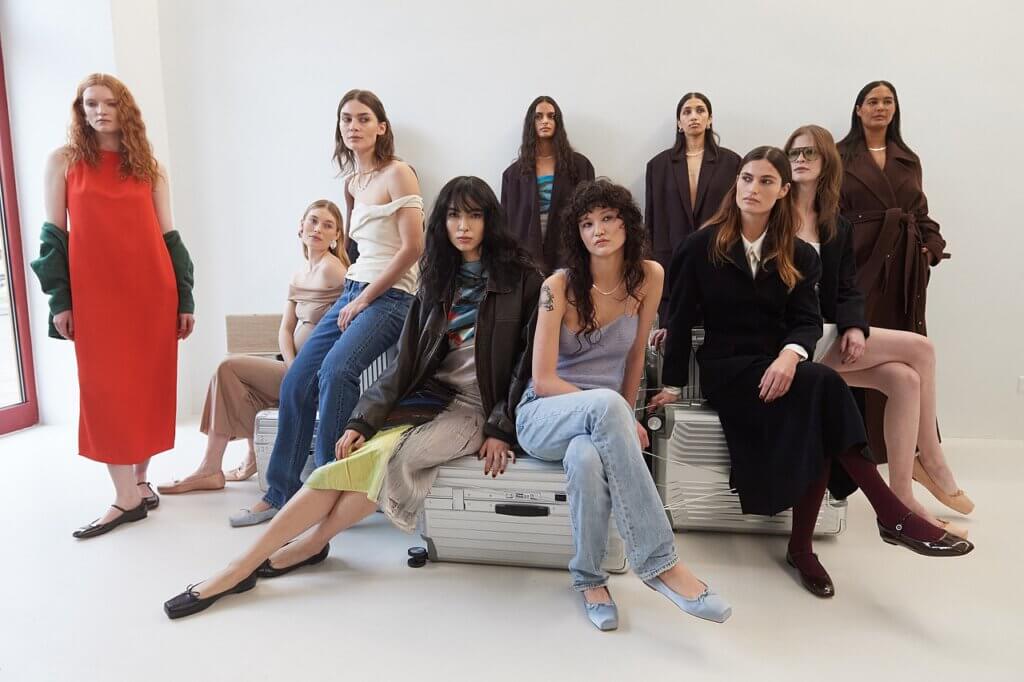
But then, in the “poor but sexy” era, a fashion week emerged in Berlin and experienced a few sensational years. The fashion fairs Premium and the former Cologne streetwear fair Bread & Butter came to the capital in 2003. Even the then unknown Swedes Acne and Filippa K were drawn to the city for a show in the tunnel of underground line 5. The improvised tent atmosphere had its own charm and still carried the transitory legacy of the nineties. The Berlin style was also recognised internationally and the former clubwear was not dissimilar to streetwear from the USA. Subversive and cool, yet still multifunctional and wearable. But as soon as the mainstream approached and money could be made with visions, things became problematic in Berlin.
Since then, the fashion fair has hovered between art and commerce. Between show spectacles, resurrected trade fair formats and the missed opportunity to turn unconventional style into international success, it increasingly lost relevance in the decade. When labels became great and were able to build on the clean, purist and high-quality aesthetics of greats such as Jil Sander, for example Perret Schaad, they were doomed to fail due to the stinginess and often also bourgeoisness of the German clientele. Conversely, many labels were too complacent for the pragmatic fashion preferences of the Germans. Over time, the ambition to achieve international greatness, to ever join the Big Four, the fashion metropolises of Paris, Milan, New York and London, seemed to fizzle out.
Since then, the fashion week has been in a kind of identity crisis. In 2021, efforts were still being made to provide new economic impetus for the German fashion industry by relocating the Premium and Neonyt trade fairs to Frankfurt. But the plans were thwarted by the pandemic. And anyway, how was that supposed to work? The shows in Berlin and the trade fairs in Frankfurt? In 2022, Mercedes-Benz withdrew as the most important supporter.
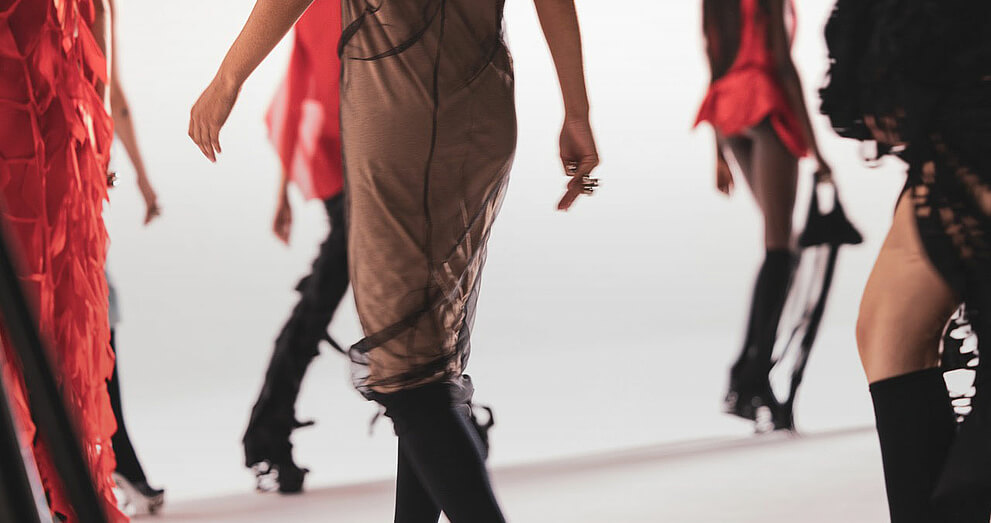
The Senate then provided a generous financial injection for the German Fashion Council. However, the focus there has recently shifted towards ideology and thus into a dead end. Sustainability formats, discussion panels and social justice initiatives dominate the event and seem more like a fig leaf. Labels such as Gerrit Jacob or Maximilian Gedra are trying to revive the avant-garde spirit of the nineties, but without any new approach or consideration for wearability, which is what is needed in Germany. Instead, gender-neutral “urban sadness” figures at Dennis Chuené or left-wing alternative satires on the Hermès Birkin bag at the Namilia label.
Has Berlin now managed the balancing act between art and commerce with this year’s shows? Excuse the cynicism, but that remains to be seen.
At least Berlin now sees a need for action: young design talent is now also being promoted in Germany. The German industry association Fashion Council Germany (FCG) and the fashion magazine Vogue Germany have announced the launch of their partnership ‘FCG/Vogue Fashion Fund’. This is intended to send a clear signal in favour of promoting German fashion, the FCG announced on Tuesday. Again, sorry to be cynical, but the Fashion Fund is not a new concept. The first version was founded in the USA back in 2003. But: better late than never.
Together they are creating a platform that actively supports young design talents in particular on their way into the industry. The Fashion Council Germany, as the representative of German fashion interests, grants participants exclusive access to its internal network, which offers extensive networking opportunities. Vogue Germany’s many years of experience with the format complements the partnership and helps to strengthen the initiative.
“German fashion has a special significance for Vogue Germany and we see it as our task to promote it and give it more visibility internationally. Together with the Fashion Council Germany, we are therefore now sending out an important signal in favor of promoting young talent. The Vogue Fashion Fund is one of the most renowned international initiatives for paving the way for young talent in the industry. It has long been our wish to create a corresponding counterpart for Germany. The fact that Vogue Germany is celebrating its 45th anniversary this year is an ideal setting for us to also select a winning brand with a big party in autumn,” says Kerstin Weng, Head of Editorial Content Vogue Germany.
Scott Lipinski, CEO Fashion Council Germany, adds: “The promotion of up-and-coming and exceptional talent has been close to our hearts at the Fashion Council Germany since our foundation in 2015 and therefore forms the basis of our work. In our projects, we always focus on supporting and promoting up-and-coming labels and designers in and from Germany at every stage of their careers. With the FCG/Vogue Fashion Fund, we have now launched an initiative together with Vogue Germany with which we will support exceptional design talent not only monetarily, but also with a comprehensive mentoring programme.”
The bar is now set high – and so is the drop. One thing was clear during the BFW: it felt like the good old days. The atmosphere was good, the shows excellent.
This season, downturns notwithstanding, designers managed to grapple with the turbulence of their times, blossoming a rich artistic expressivity that stretches far beyond the urban-esque appeal that characterises the city: indeed, one expects a few rough edges in Berlin, but the capitals credentials are slowly booming an artistic powerhouse of talents against a plethora of backdrops: modernist art galleries, underground settings and sky-high sorts – this season’s reigning touchpoint saw garments alluding to old-school glamour with a modern twist. Because Berlin’s aesthetic can come off a touch overbearing, so a few designers’ collections worked a charm. Ditto the unexpectedly neutral elements emblazoned across next Spring’s template, like the long, fuss-free proposals by William Fan, Litkovska, Bobkova and Sia Arnika, which were so lightweight and airborne that they came to seem ethereal as they floated back and forth along the length of the runways.
All in all, it was nice to see Berlin Fashion Week pursue a dreamy tone, for once, as opposed to putting a lick of polish on a full-on, all-encompassing nightmare. Accordingly, your enthusiasm for these stapes may depend on how excited you can get about the prospects of the restless pursuit of playfulness. But one question remains: Can Berlin keep up with the high bar it has now set for itself in the future?









